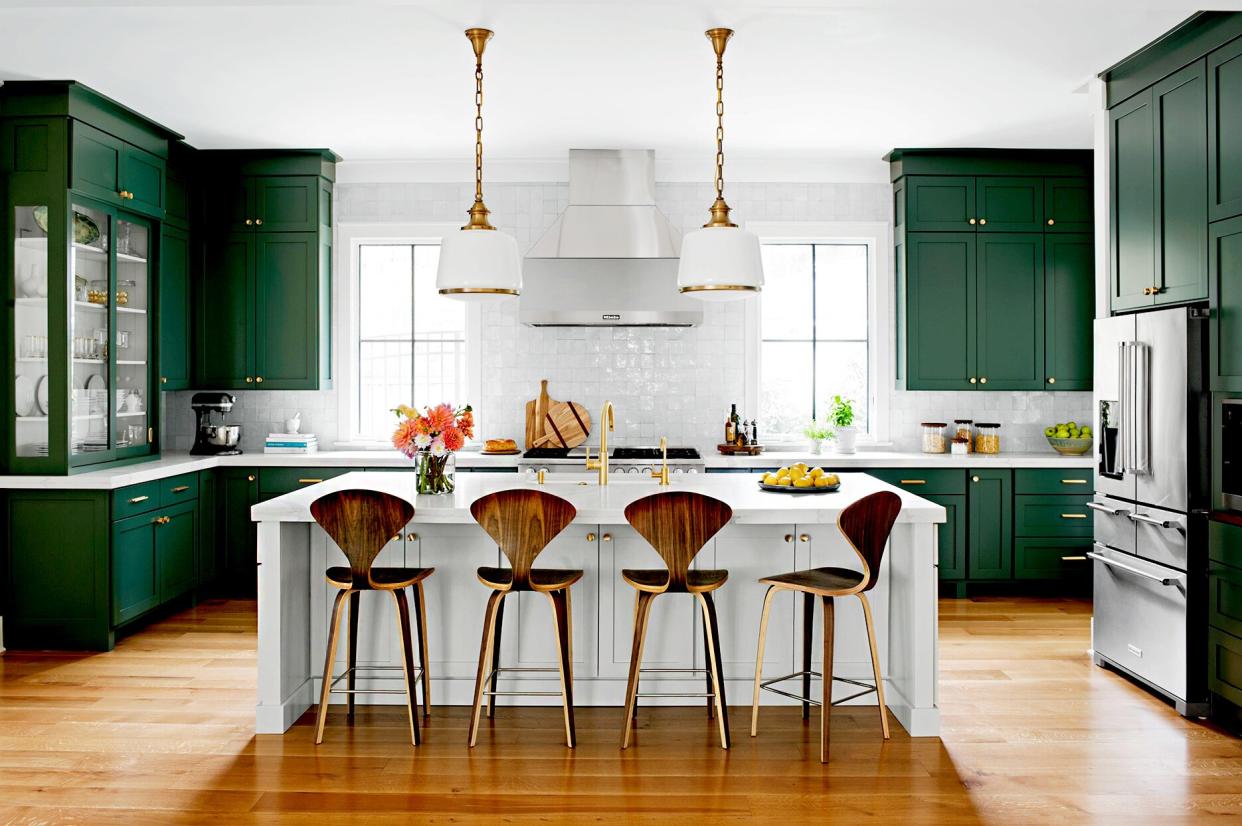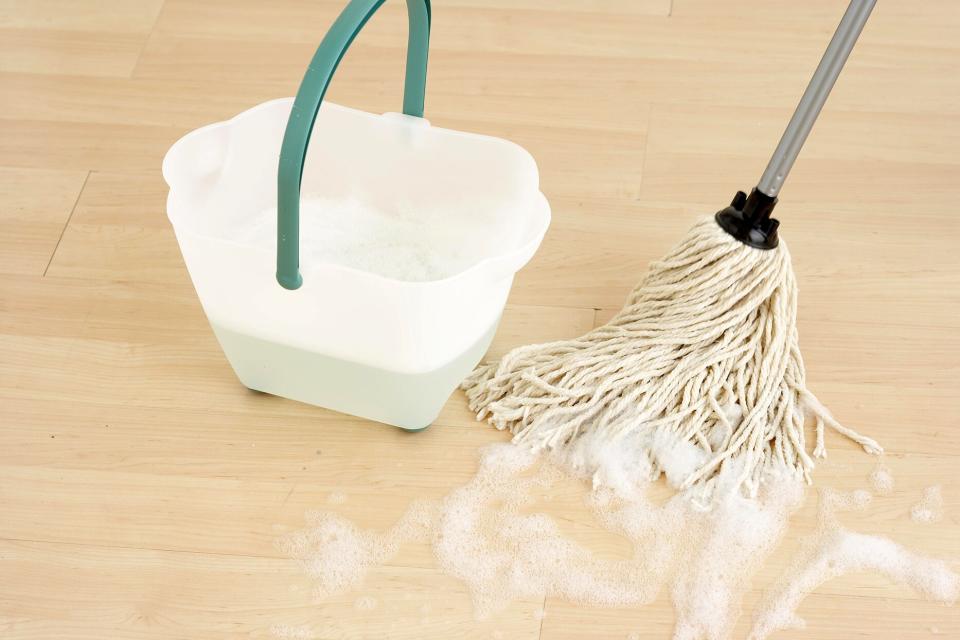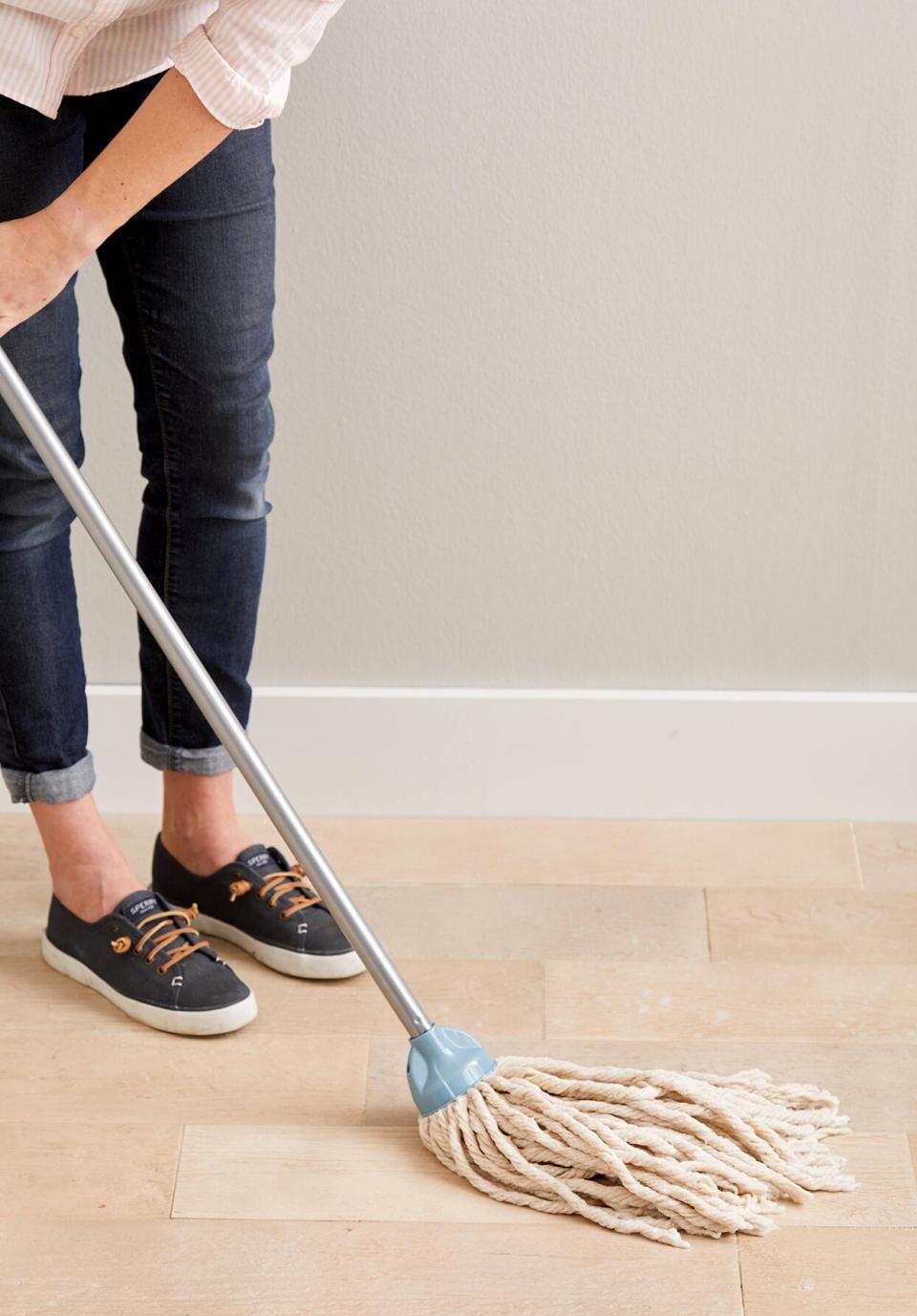How to Clean Hardwood Floors for Scuff-Free Shine

Floors take a lot of wear, including daily traffic and inevitable spills, scuffs, or mishaps. The best way to clean hardwood floors starts with smart preventive measures, which not only help protect floors but also cut down on the time you spend cleaning. To lessen tracked-in dirt, place floor mats both outside and inside exterior doors. In snowy or rainy weather, set up a boot removal area to avoid damaging floors with tracked-in water and de-icing agents. Along with a spot to sit down and a place to store shoes, keep a cleaning cloth or small towel tucked away next to the door to quickly clean up errant puddles on wood floors.
Even when the forecast doesn't call for precipitation, it's smart to remove shoes when coming indoors to avoid tracking dirt, grime, and germs all over the house. Especially with hardwood floors, scratch-causing heels and cleats should be left at the door. Prevent marks on hardwood floors by using floor protectors under furniture and adding area rugs in play areas to ensure children's toys don't scratch the floor. In addition to these daily best practices, follow our tips for cleaning wood floors to keep your home's flooring in top shape.

Anthony Masterson
How to Clean Hardwood Floors During Your Regular Cleaning Routine
A regular once-over with a broom or dust mop will do wonders for cleaning hardwood floors. How often you have to do this chore depends on the traffic your hardwood floors receive. For a quick clean, dust wood floors with a mop that has been treated with a dusting agent to pick up dust, dirt, and pet hair that might scratch the floor surface. Options for the best mop for hardwood floors include those with a microfiber head. This material is designed to trap dust and grime. Follow the mop manufacturer's recommendations for using wood floor polish or dusting sprays; some mops won't require an extra cleaning agent.
Related: This Mop Removes Dirt and Bacteria Using Only Water—And My Floors Have Never Been Cleaner
When considering how to clean hardwood floors, don't overlook vacuuming. For weekly or biweekly cleaning, vacuum with a floor-brush attachment. Do not use a vacuum with a beater bar attachment, which can scratch a wood floor's finish. For quick dusting, use disposable electrostatic cloths ($8, Target).

Kritsada Panichgul
How to Deep-Clean Hardwood Floors
The best way to clean hardwood floors starts with preventive measures and routine cleaning, but sometimes a deeper clean is in order. Dirt, oil, and grime build up over time and aren't completely removed by a weekly dusting.
For how to deep clean hardwood floors (consider doing this cleaning in the spring or just before the winter holidays), use a wood floor mop and wood floor cleaning product diluted according to the label instructions. Saturate a sponge or rag mop in the water, then wring it almost dry so it feels only slightly damp to the touch. Damp-mop the floor, being careful to prevent standing water on the floor. If the cleaning product requires it, rinse the surface with a clean mop dampened in clean water. Wipe up excess liquid immediately because standing water can damage wood surfaces. If the weather is humid, operate a ceiling fan or the air-conditioner to speed up drying. If cleaning isn't cutting it, you might need to refinish the wood floors to help them look new.
Best Cleaners for Hardwood Floors
If you're unsure about the best hardwood floor cleaner for your home, talk to your flooring manufacturer. They can often recommend a specific cleaner to use for their product. But if your flooring isn't new, or you can't consult the manufacturer, pick a product that is specifically made for cleaning wood floors. Don't use vinyl or tile floor cleaners as these products might damage, rather than clean, wood floors. If you're concerned about using harsh chemicals, look for hardwood floor cleaners that are Greenguard Gold certified, which means they're safe to use in homes with kids and pets. Otherwise, try the natural route with a homemade cleaning solution for your floors.

Jason Donnelly
How to Clean Hardwood Floors with Vinegar
To clean wood floors naturally, use a common kitchen staple: vinegar. Learning how to clean hardwood floors with vinegar will save you money on top of providing a safe cleaning method for your floors. Clean wood floors with vinegar by adding 1/2 cup white vinegar to a gallon of lukewarm water. Follow the tips for how to clean hardwood floors with a mop, above, to prevent water damage. Then use vinegar to naturally clean the rest of your home!
Editor's Note: Vinegar can dull certain hardwood flooring finishes, so always test your solution in an inconspicuous spot before using the ingredient to clean your floors.

Stacy Zarin Goldberg
How to Remove Stains on Hardwood Floors
Consider your flooring's finish before trying to remove a stain from wood floors. If the stain is on the surface, your floor probably has a hard finish, such as urethane. If the finish stain has penetrated through to the wood, the floor probably has a soft oiled finish, common in older homes whose floors have not been refinished and resealed. For floors with a hard finish, wipe surface stains with a soft, clean cloth. Never use sandpaper, steel wool, or harsh chemicals because they can permanently damage the finish.
The following remedies are for hardwood floors with soft oiled finishes. If needed, end each treatment by staining the wood, then waxing and buffing the spot to match the rest of the floor.
Remove dark spots and pet stains: Rub the spot with No. 000 steel wool ($4, The Home Depot) and floor wax. If the area is still dark, apply bleach or vinegar and allow it to soak into the wood for about an hour. Rinse with a damp cloth.
Remove heel marks: Use fine steel wool to rub in floor wax.
Remove oil-based stains: Rub the area with a soft cloth and dish detergent to break down the grease. Rinse with clear water. If one application doesn't work, repeat the procedure. Keep children and pets out of the room until you're done. Let the spot dry, then smooth the raised grain with fine sandpaper.
Remove watermarks or white stains: Rub the spot with No. 000 steel wool and floor wax. If the stain goes deeper, lightly sand the floor and clean with fine steel wool and odorless mineral spirits.

